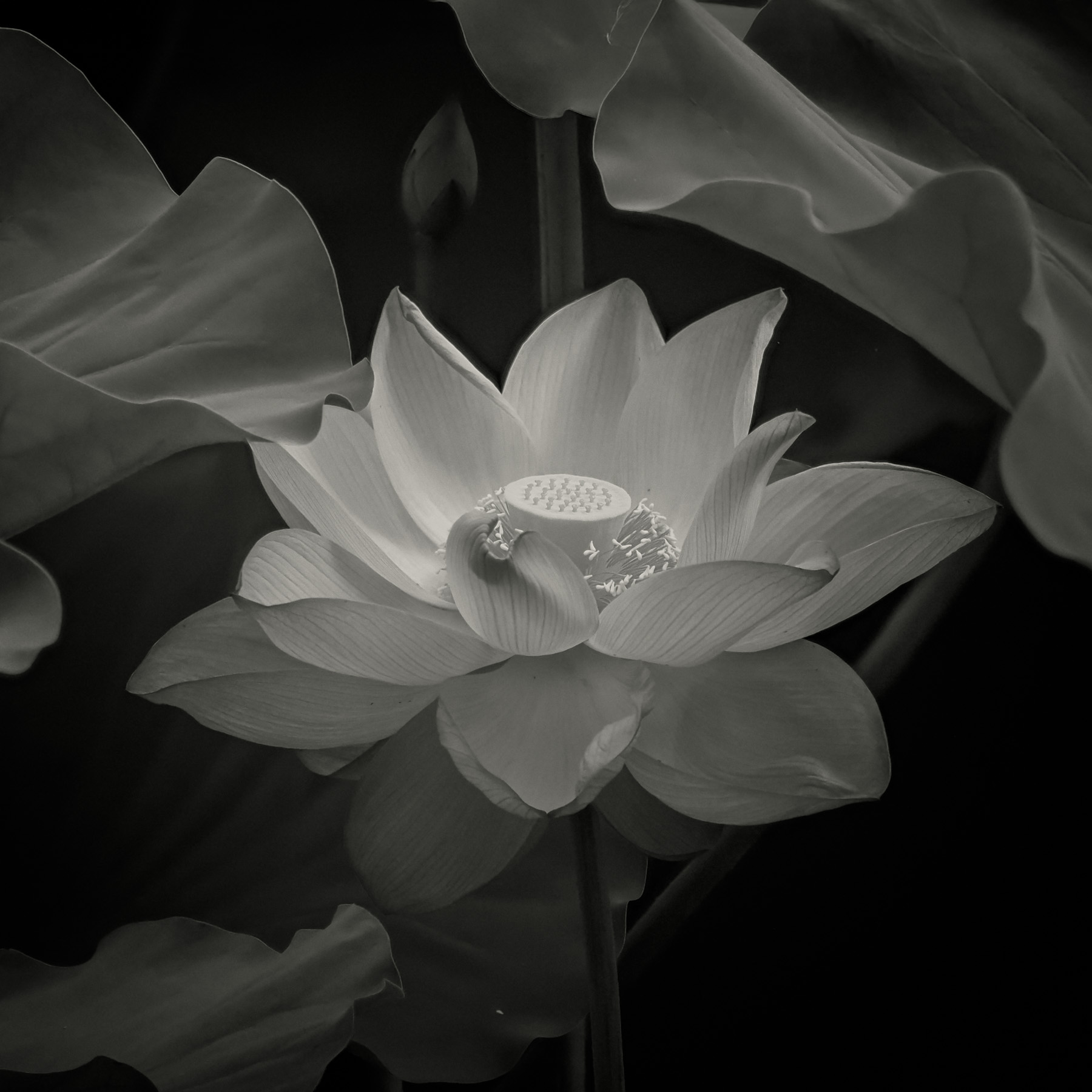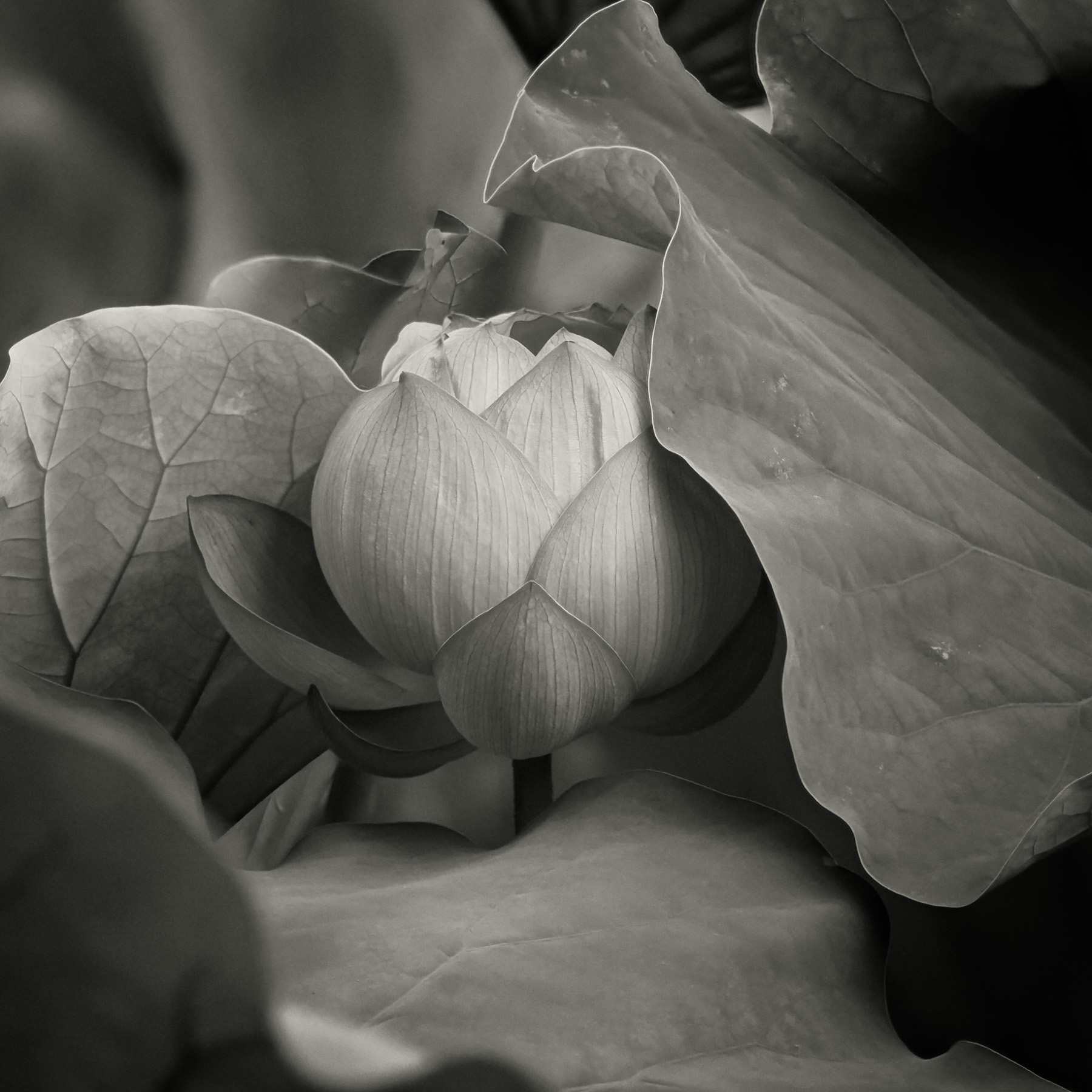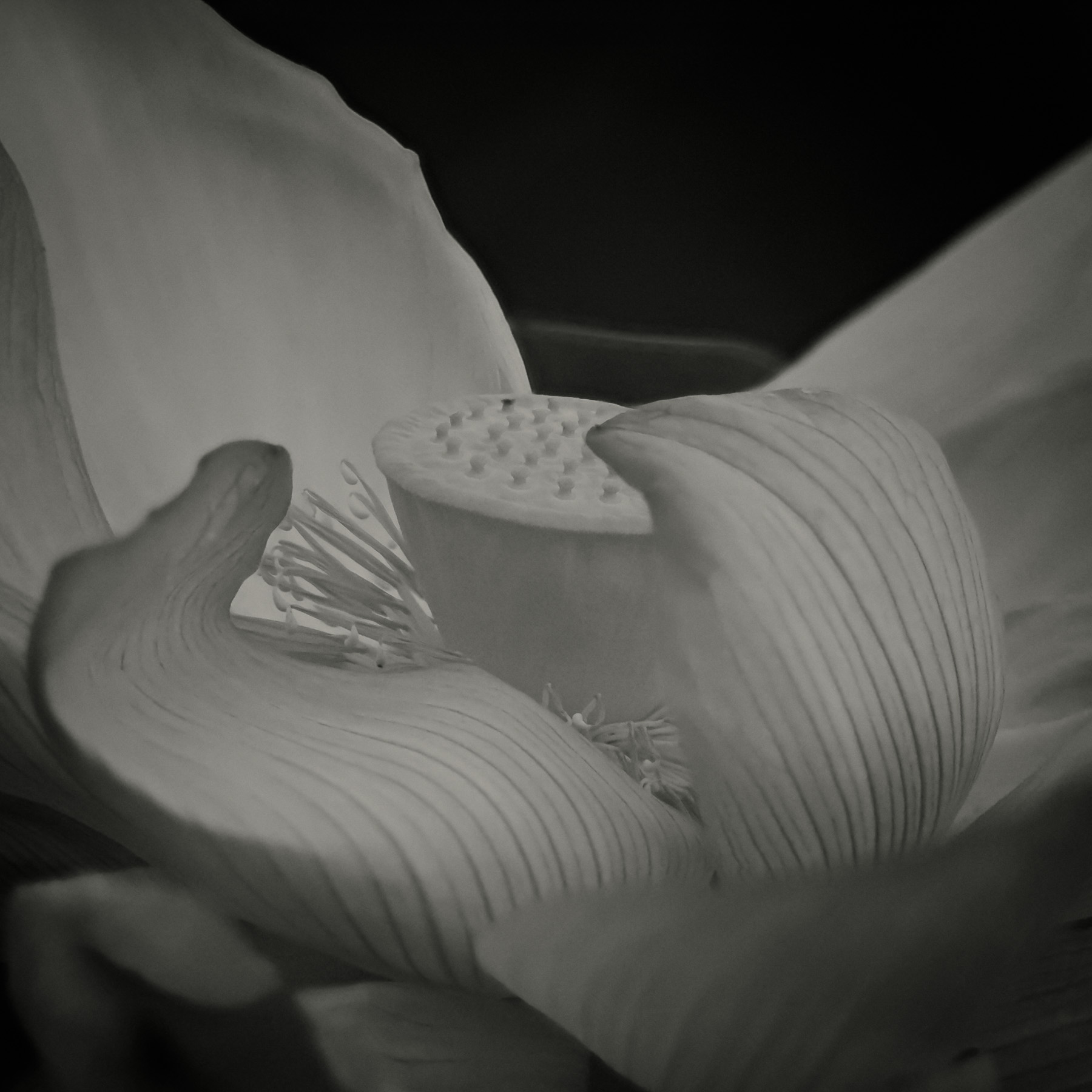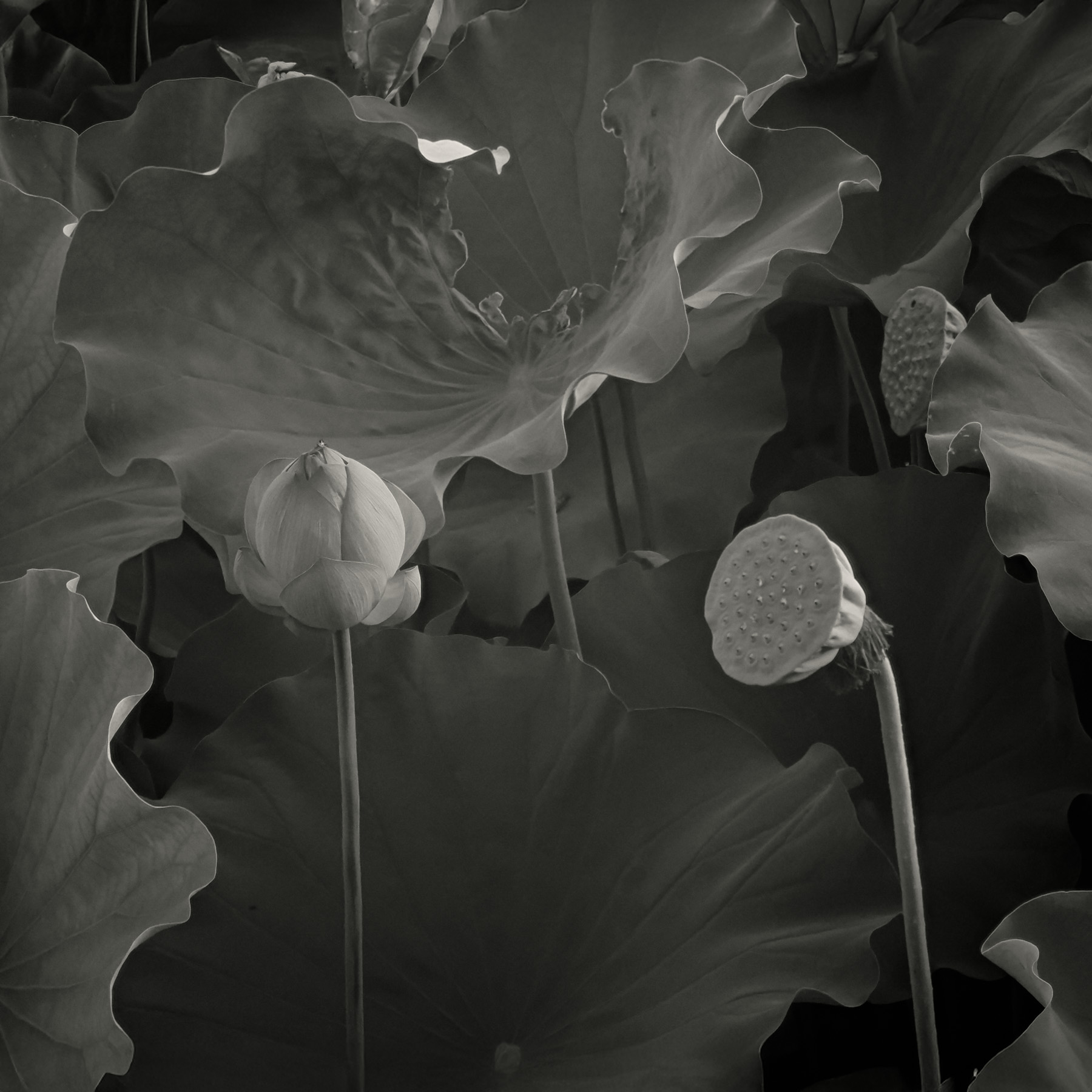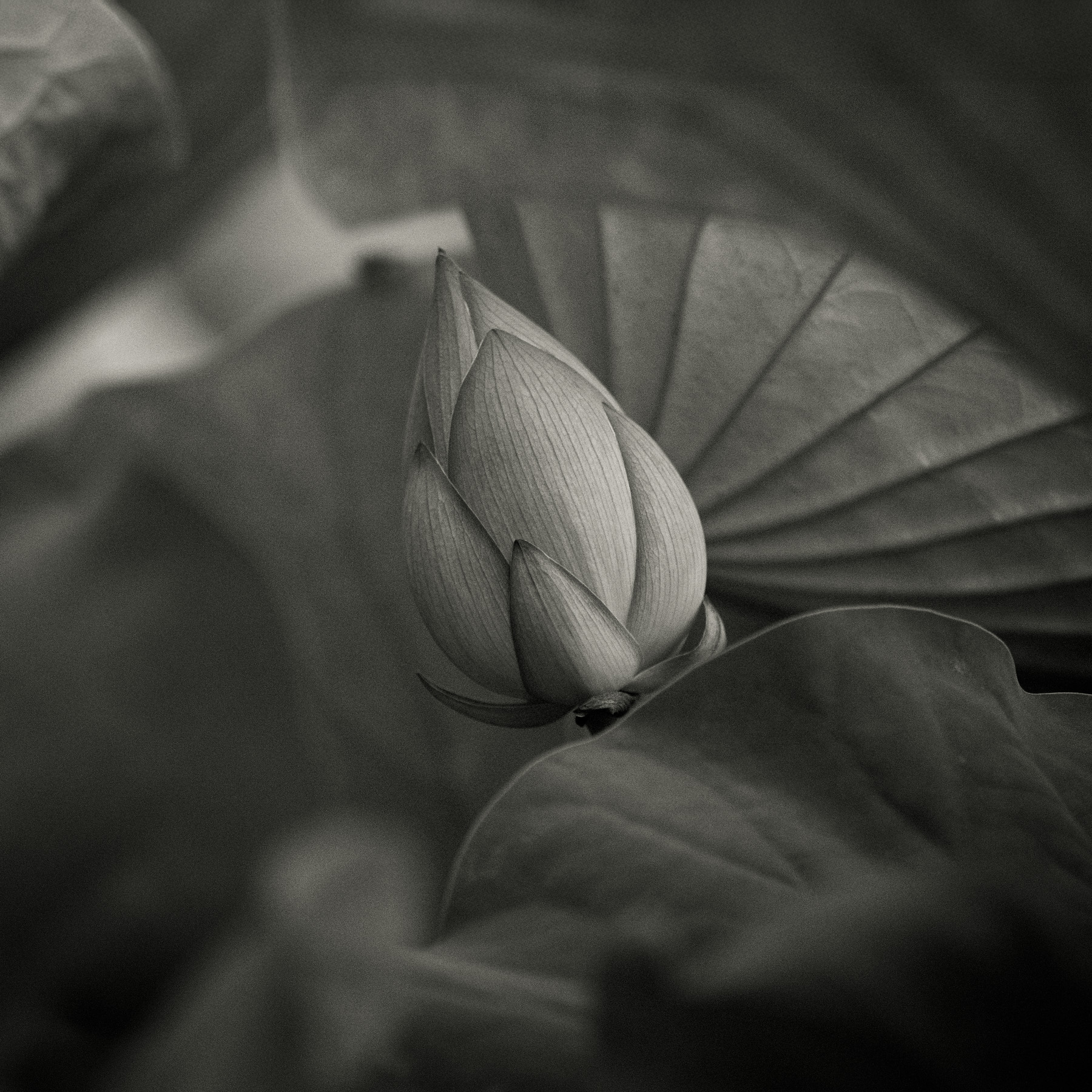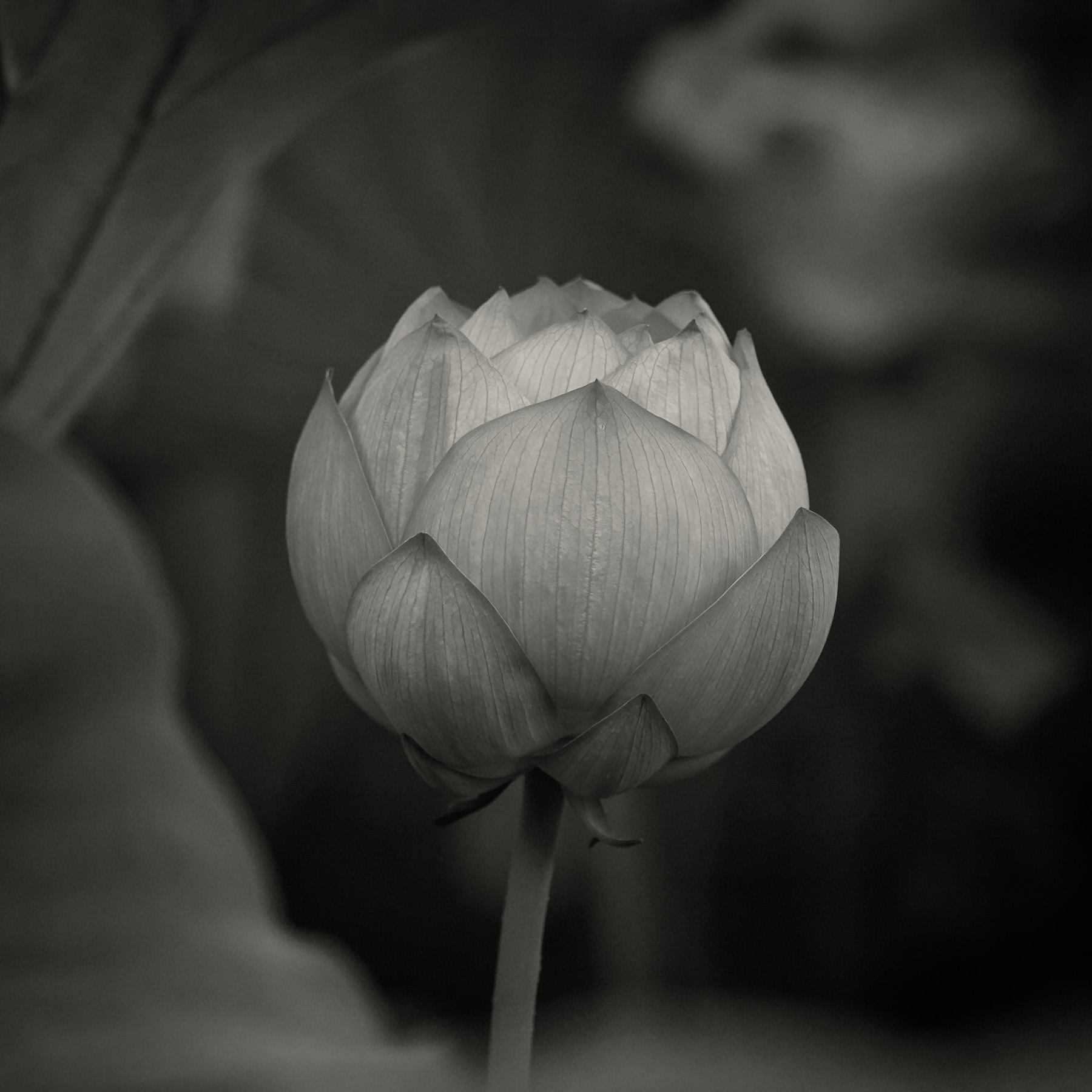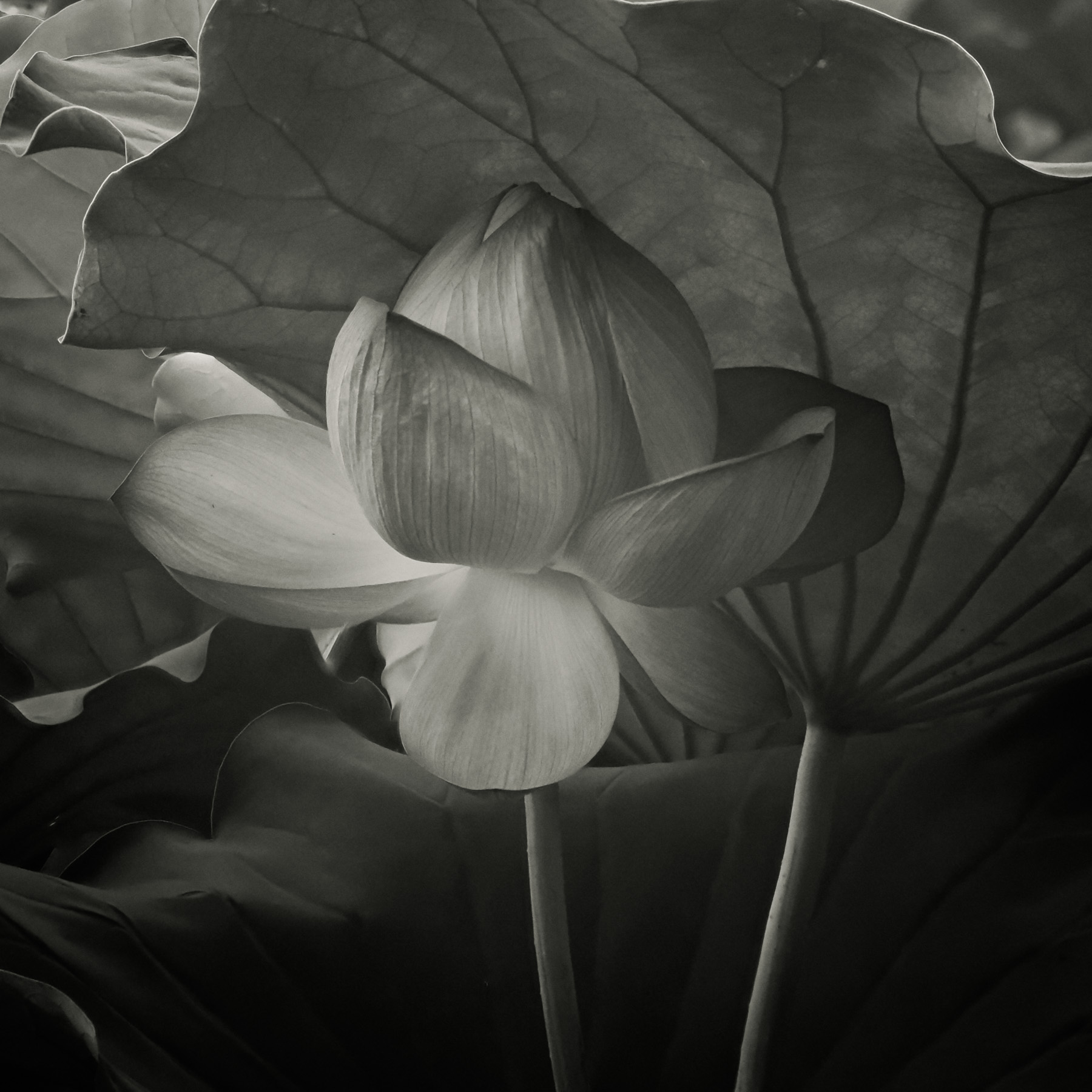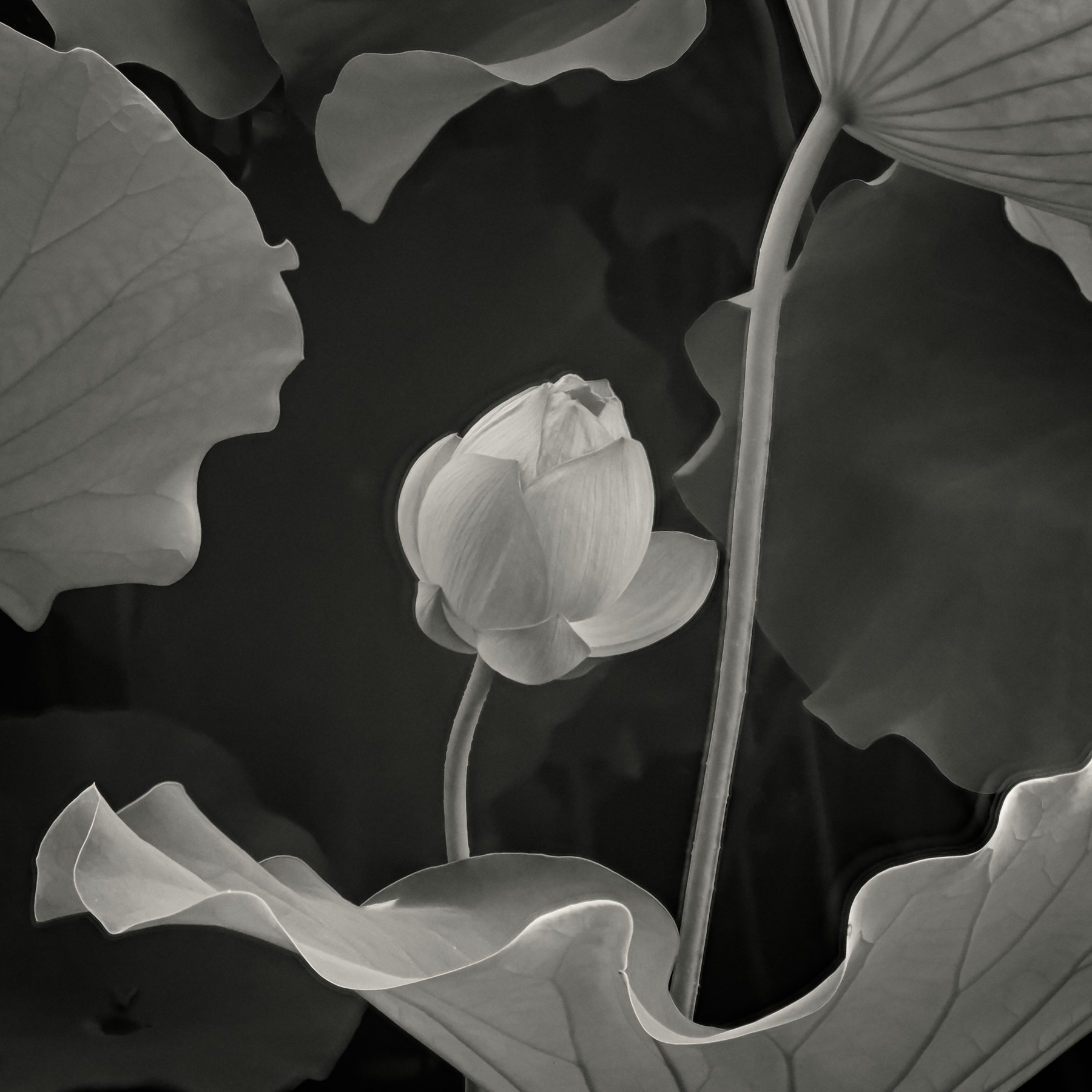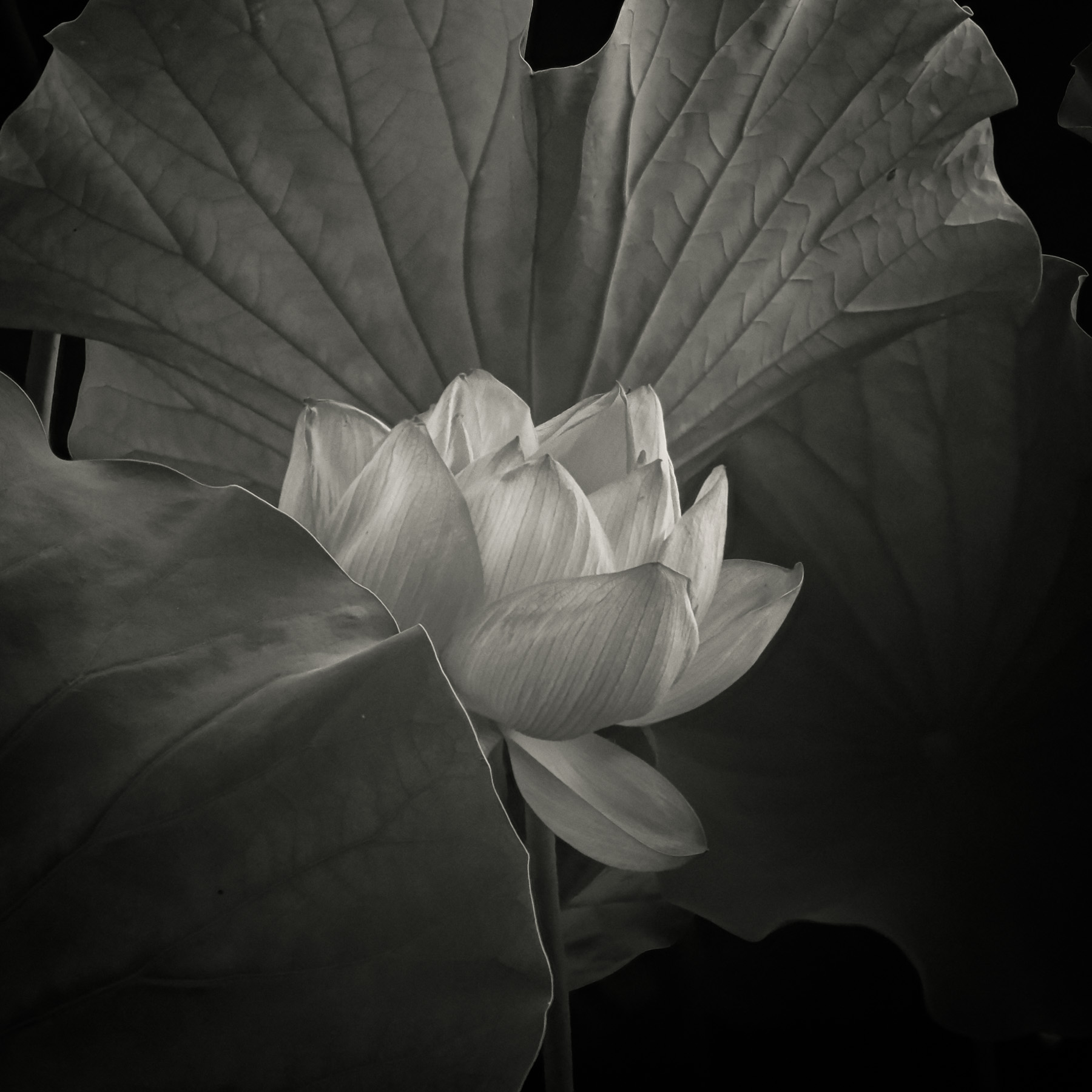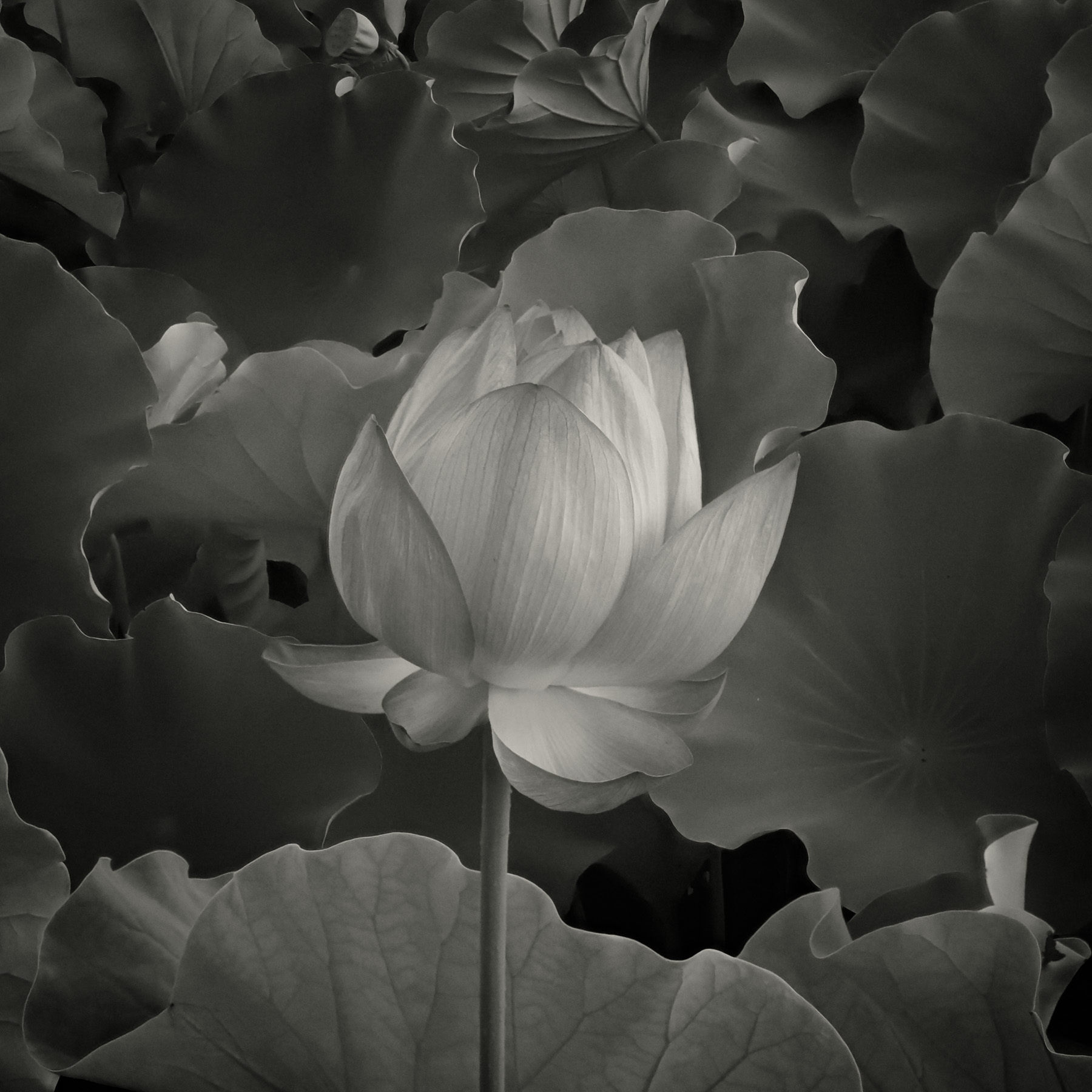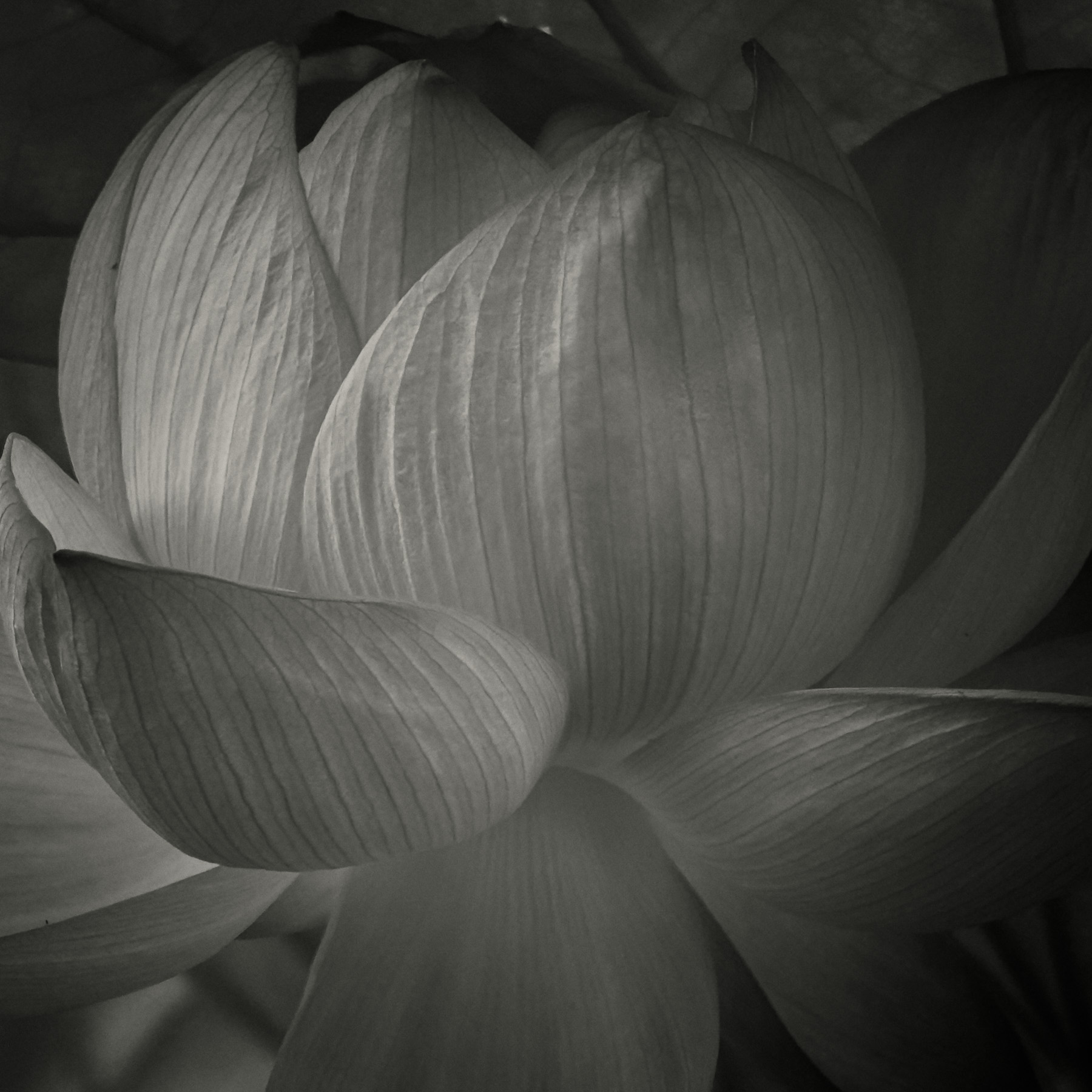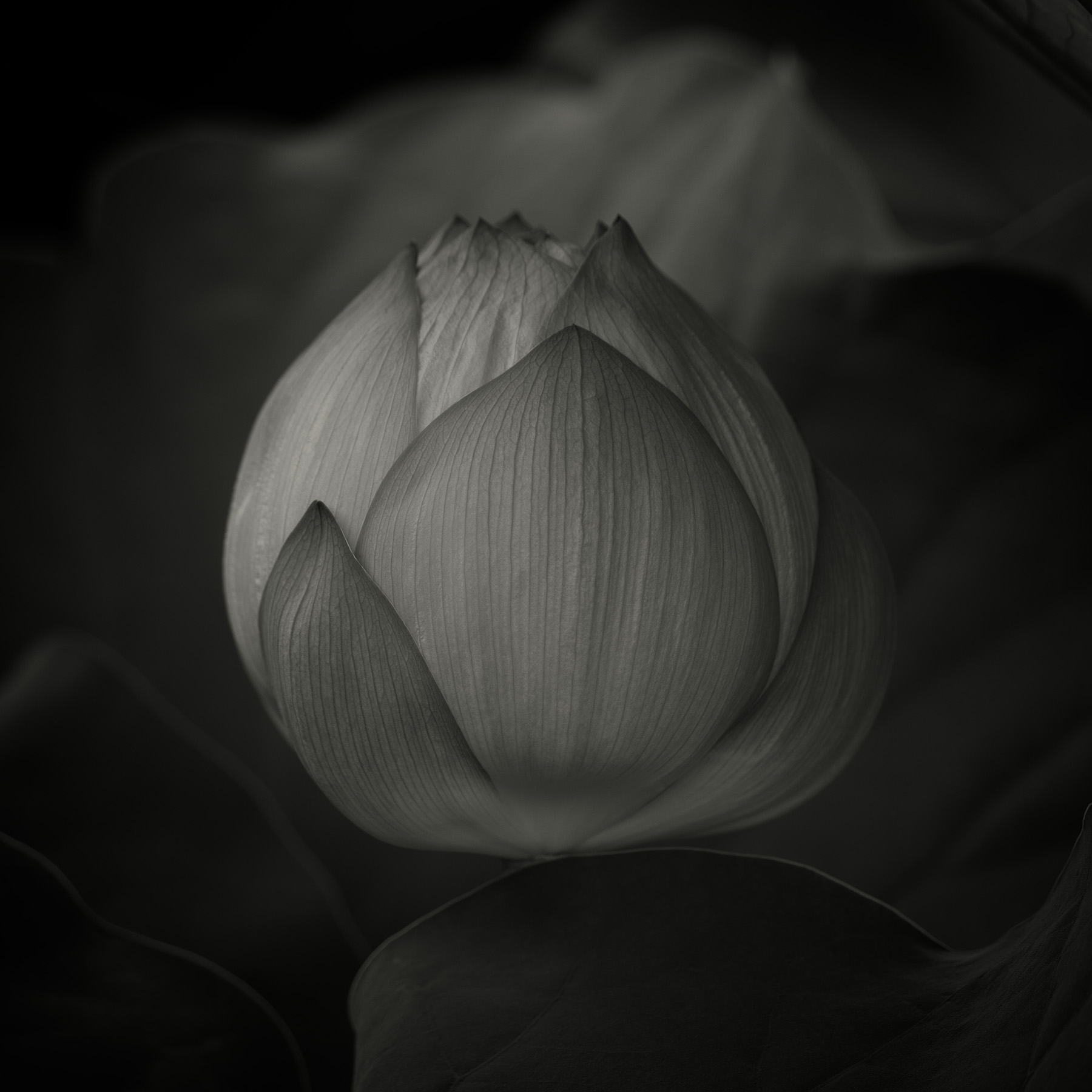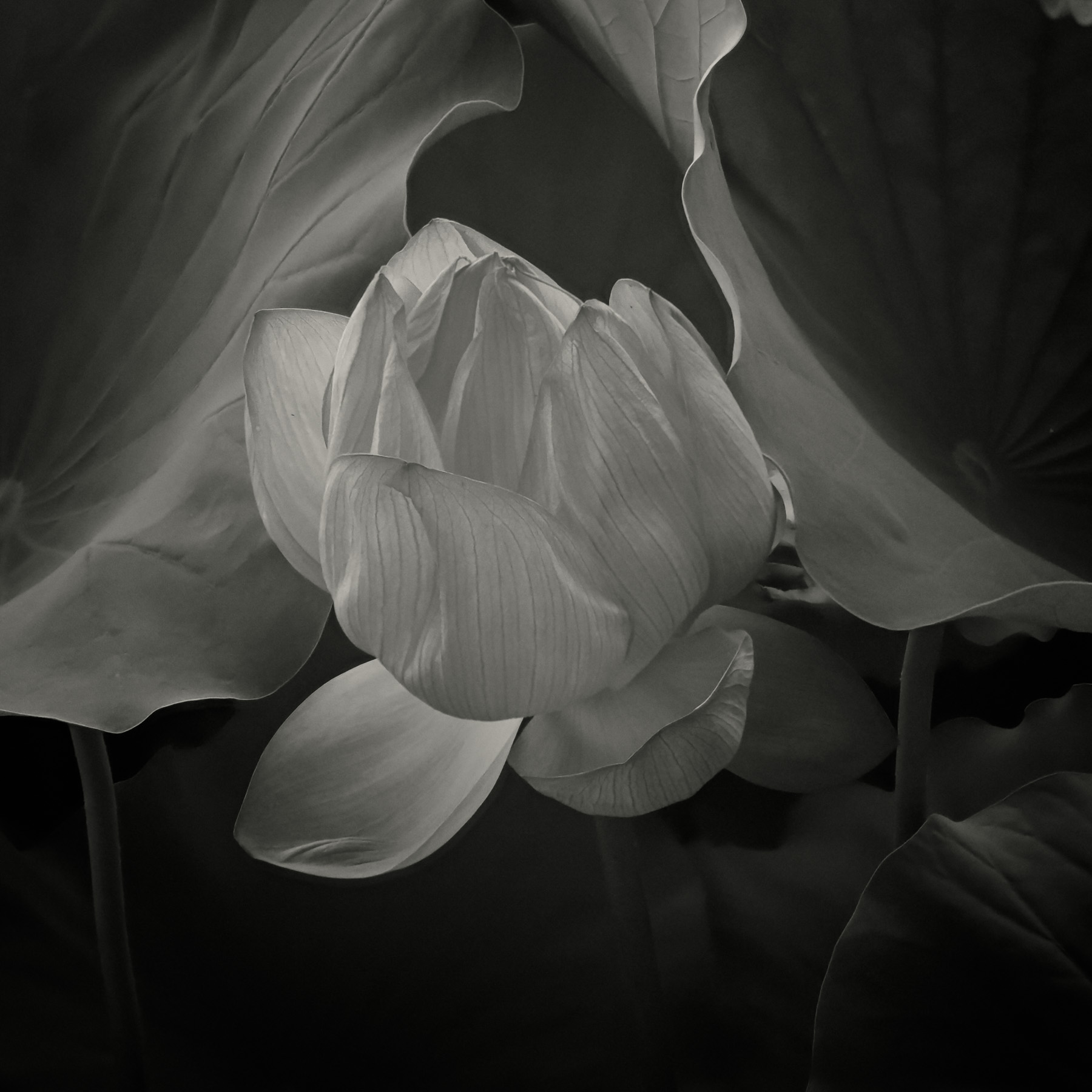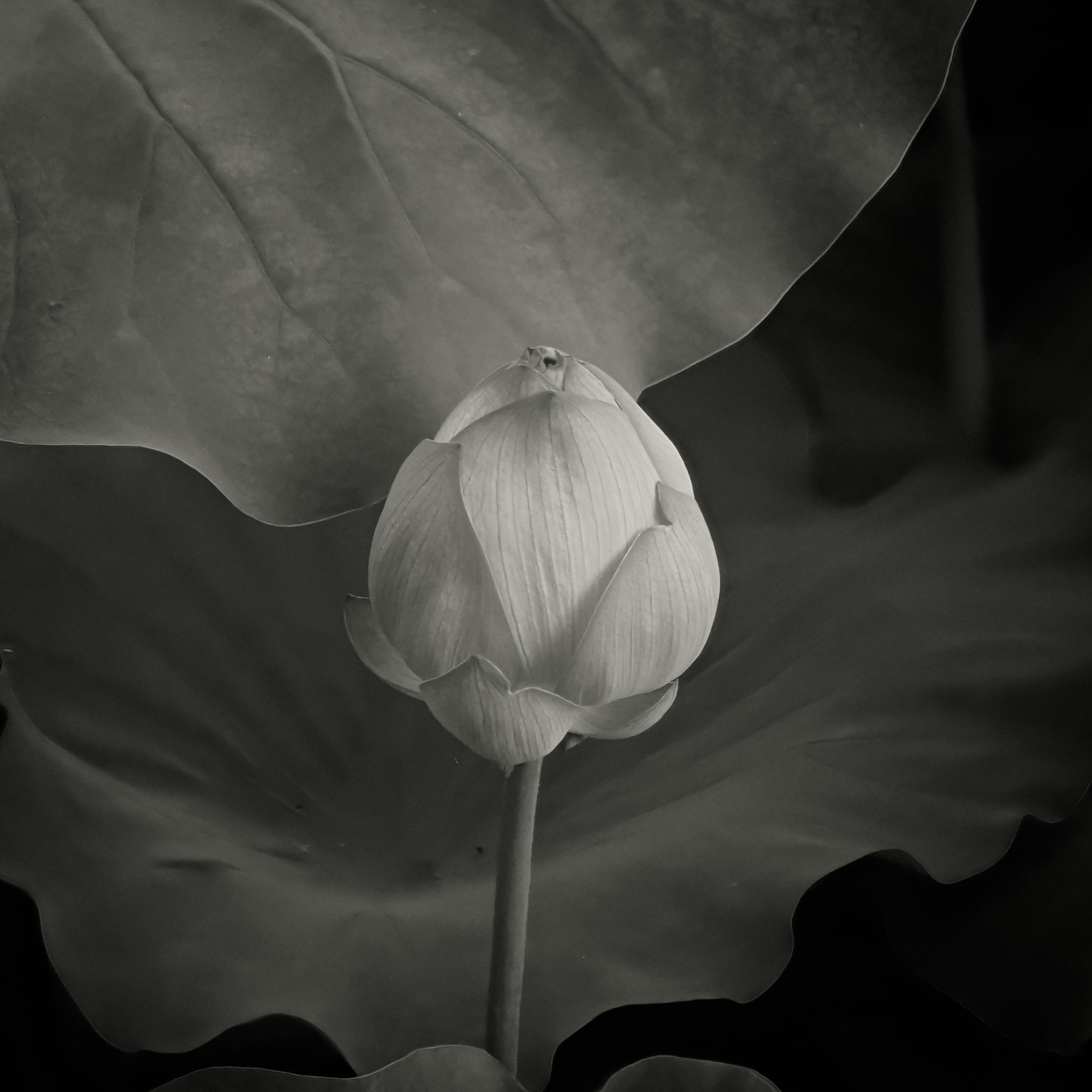Lotus in Outline Shinobazu Pond’s Lotus:
/ Flowers
上野恩賜公園の不忍池は、江戸時代から浮世絵や詩に描かれてきた歴史ある蓮池です。1625年、寛永寺建立に伴い琵琶湖に模して弁天堂を築いた際、蓮が植えられ、以来夏の名所として庶民の心を彩ってきました。
現在、この蓮は最盛期を迎え、6月末から8月にかけて池面を覆うように花を咲かせ、午前の光に揺れるその姿は多くの人を魅了しています。美しいピンクや白の花の色に目を奪われがちですが、葉が支える端正な形の構造美にも目を向けていただければと思います。そこで本作品はあえてモノクロームで表現しました。色を取り除くことで、花びらと葉が織りなす造形的な面白さに焦点を絞りました。光と影のグラデーションによって浮かび上がる線と面、静かな力強さを感じていただけるでしょう。不忍池の蓮に宿る歴史とともに、その形の美しさを静かに味わっていただければ幸いです。
Shinobazu Pond in Ueno Park, Tokyo, has been celebrated since the Edo period—as seen in ukiyo-e prints and poetry—for its iconic lotus blooms planted alongside the reconstruction of Kan’ei ji and the Bentendō in 1625 Today, as in centuries past, the lotus pond transforms into a sea of blossoms, typically peaking from mid July to mid August, when each early morning the flowers open between 7 a.m. and 9 a.m. before closing by noon. Now in full bloom, these lotus flowers present vivid pinks, whites, and soft reds that naturally draw the eye. Yet equally compelling—but often overlooked—is the structural beauty of the leaves and stems: the large round leaves, the radial symmetry, and the elegant vertical stalks beneath the blooms. To emphasize this architectural grace, the photograph is rendered in monochrome. Stripping away color allows light and shadow to sculpt the form—the curvature of each petal, the interplay between blossom and leaf, the sculptural silhouette in sharp contrast. The result encourages a fresh way of seeing lotus—not merely as a colorful flower, but as a dynamic composition of planes, lines, and textures. I invite viewers not only to appreciate the lotus’s historical legacy and seasonal bloom but also to discover its hidden geometry and form. May this black-and-white portrait awaken a deeper appreciation for the lotus’s understated elegance.
